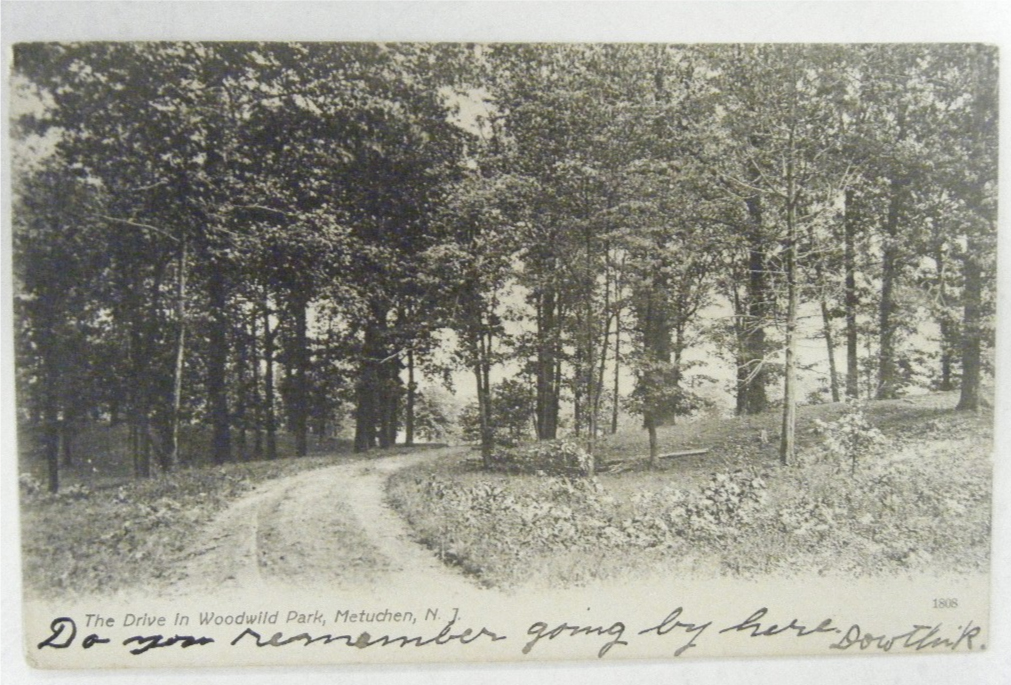Woodwild Park is a 3.5-acre park in Metuchen, New Jersey located between Middlesex Avenue, Oak Avenue, and East Chestnut Avenue.
The park has remained undeveloped because of the foresight and generosity of the Charles Corbin family. Mr. and Mrs. Corbin conveyed title to the park property to the Woodwild Park Association “to hold said lands as a public park… and control the use thereof so as to promote the interest and enjoyment of neighboring residents and of the Citizens of Metuchen and vicinity” (Extracted from a deed dated November 1, 1897)
The area that is now Woodwild Park was the front of an estate house that was built by Thomas W. Strong in the mid 1800s and that later served as the residence of the Connor family for whom nearby Connor’s Pond is named. The four stone pillars that marked the entrance to the estate still stand on Middlesex Avenue and now mark the entrance to the park.
The triangle of land at the entrance to Oak Avenue the site of the antique horse trough that is one of the symbols of Metuchen is also part of Woodwild Park. In 1900 the trough was erected to serve both horses and dogs by the Woodwild Park Association at a cost of $450, according to the pamphlet “An Historical Walking Tour of Metuchen New Jersey,” published by the Metuchen Centennial Commission in 2000.
An inventory of open lands and parks in the Borough of Metuchen includes the following descriptions. “The woods [are] old and relatively undisturbed.”
“The most prominent feature of the park is a large depression which is a glacial feature called a kettle hole. A kettle hole is formed when a large block of glacial ice becomes buried in debris and slowly melted leaving a hollow. The highest elevation in the park is 148 feet while the bottom of the dell lies 14 feet lower.” This depression becomes a seasonal pond in the spring where mallard ducks have been seen.
Park flora includes: (Canopy) Black Oak, Red Oak, White Oak, Mockernut Hickory, Shagbark Hickory, Black Birch, American Beech, Tulip, Sweetgum, Red Maple, White Ash, (Subcanopy) Sassafras, Sweet Cherry, Black Cherry, Flowering Dogwood, Gray Birch, Willow, (Shrubs) Highbush blueberry, Lowbush blueberry, Pinxter flower, Deerberry, Arrowwood, Blackhaw, Mapleleaf viburnum, Elderberry, Wild grape, Japanese honeysuckle, Virginia creeper.
The park is meant for passive recreation only. There is a short dirt road for walkers and bicyclists. The Association continues to preserve this quiet spot in its wooded state. The members periodically work on the grounds, clean up litter and keep the poison ivy in check.

